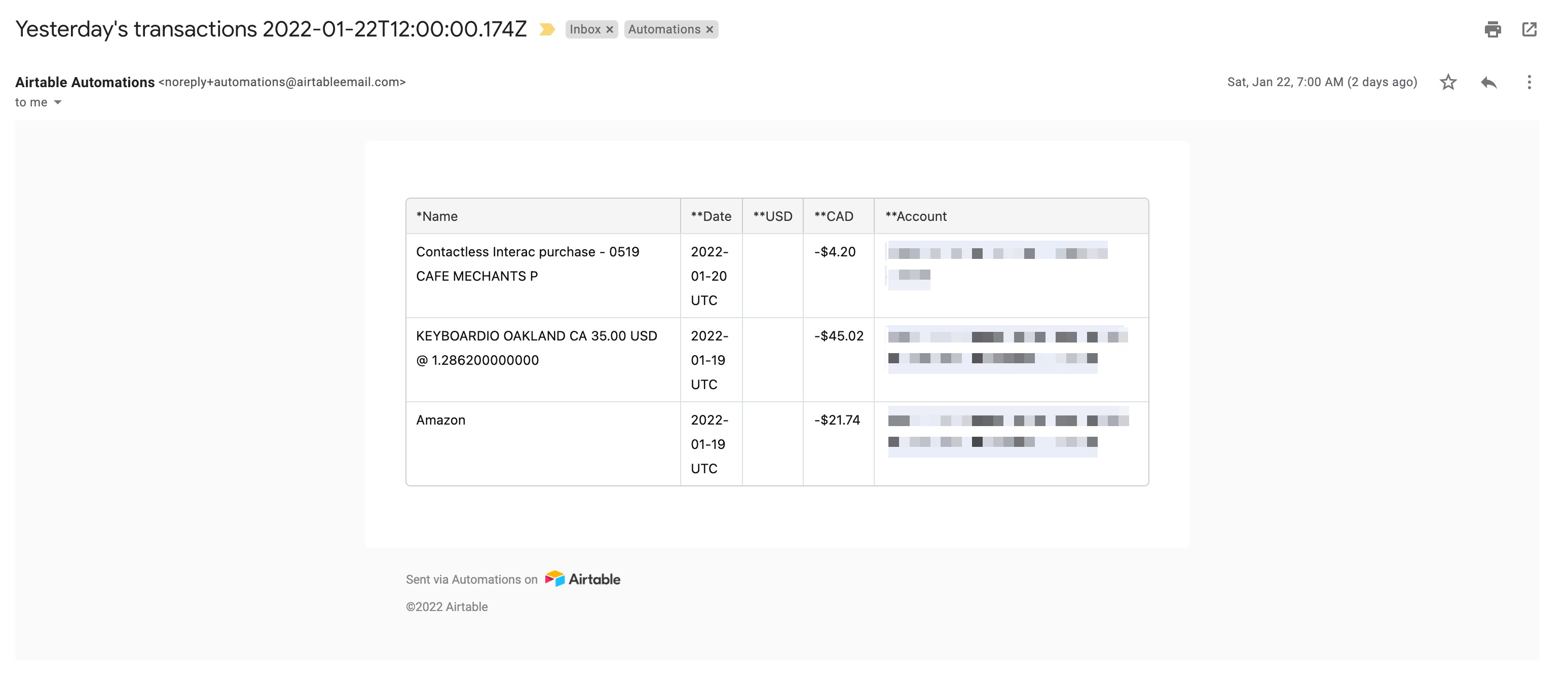Understanding where you spend your money is difficult. Transactions can happen across different accounts, in multiple currencies, some are shared etc etc.
In this workflow, I want to get an understanding of where I'm spending my money. I sync all of my bank accounts into one place and then auto-categorize each expense.
Workflow overview
To automate this workflow, I use fintable.io which sends sync all of my transactions to Airtable. Then I use Airtable automations to send myself a daily email with all of yesterday's transactions and Airtable Apps to get an overview of my spending every month.
Step 1: Syncing your bank accounts with fintable.io
I pay for things using different cards depending on the currency or the points at play. The first step in my workflow is getting all of those transactions into one place so I can tag them to get an idea of spend per category like groceries or transportation.
My first financial sync tool was Tiller Money which syncs all your transactions into a google sheet. It's great, highly recommend.
However, I wanted a relational database at my core so I can easily associate transactions to accounts. The fact that I work at the leading business relational database provider (although I'd never call it that) probably had an effect here. My first attempt was using Parabola to bring the transactions from the sheet into Airtable. This was clearly workflow overkill.
Luckily, Fintable.io came along. It can sync all of your bank transactions into one Airtable base. It uses Plaid, Fincity and a few more providers in the back-end to have wide bank account coverage. Simply set up your sync and your transactions will flow in!
Step 2: setting up your Airtable base
Next step is to structure your Airtable base. Fintable provides a template which is a great starting point. From there I add a single select to categorize each transaction.

Step 3: Automate & visualize
As a reminder of my overspending I like to receive a daily email with all of the transactions over the last 24 hours (it also helps for fraud detection). So I set up an email digest automation that sends me a neat email with all of those.

And finally, at the end of the month, I like to get a sense of exactly what categories are sucking money from my future self. For that, I use a mix of chart and summary apps in an Airtable dashboard.

With my finances on autopilot, I'm no better at managing my money but I do have better visibility into just how bad I am at it. Isn't that what all of this is about?
Until next week, keep building!
Aron






